How To Play Oathbreaker - MTG's Newest Format: Rules, Banned Cards And More

As of a few days ago, Oathbreaker is an official MTG format. Up until now, it was a casual format that was actually invented by fans. Being an official format means that regulated tournaments and preconstructed products are on the horizon as well as an influx of interested players wondering what it is and how it works. You've come to the right place if you're one such player. Today I'll cover how to play Oathbreaker, the rules, the ban list, and answer some FAQs. Let's jump right in.
How To Play Oathbreaker?

Oathbreaker + Signature Spell
The format is quite similar to Commander but with a few key differences. In Oathbreaker, players build 60-Card decks around a Planeswalker, which functions just like a commander would. In addition to this, you'll also choose a "Signature Spell." Your Signature Spell can be any instant or sorcery spell and it stays in the Command Zone along with your Planeswalker.
You can cast your Oathbreaker anytime it's legal to do so. In other words, imagine the card as being in your hand at all times. Your signature spell on the other hand can only be cast while your Oathbreaker is in play. On top of that, the regular timing restrictions apply. Like Commander, this is a singleton format. This means your deck can only contain a single copy of any card other than basic lands.
The Command Zone
If your Oathbreaker would go from the battlefield to another zone (the graveyard, exile, or your hand) you may place it back in the Command Zone instead. The same applies to your Signature Spell however it must be put into the Command Zone instead of anywhere else.
You May Also Like: Bidding For The Serialized 001/001 One Ring Is At $100,000!
To elaborate, if your Oathbreaker/Commander would change zones you can allow it to go to these other zones if you want. The same is not true for your Signature Spell. It must be returned to the Command Zone if it would go anywhere other than the stack.
You may recast your Oathbreaker or Signature Spell from the Command Zone multiple times. However, they cost two more generic mana for each time they've already been cast. So, the first time you simply pay their mana cost. The second time you pay their mana cost plus two. The third time you cast them, you pay their mana cost plus four, and so on and so forth.
Color Identity
Your deck's color identity is defined by the mana symbols on the Planeswalker you choose as your Oathbreaker. Each card within your deck (including the Signature Spell) must use only mana symbols that are found on your Oathbreaker. Colors that aren't on your chosen Planeswalker cannot be included in your deck.
So, for example, a deck built around Teferi, Hero of Dominaria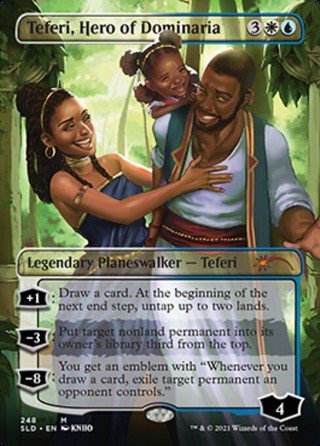 could contain Blue cards, White cards, or cards like Dovin's Veto
could contain Blue cards, White cards, or cards like Dovin's Veto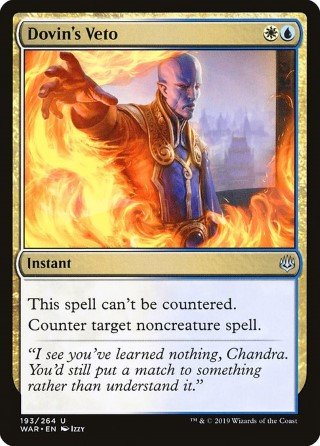 that are both colors. Additionally, any deck can include colorless cards like Skullclamp
that are both colors. Additionally, any deck can include colorless cards like Skullclamp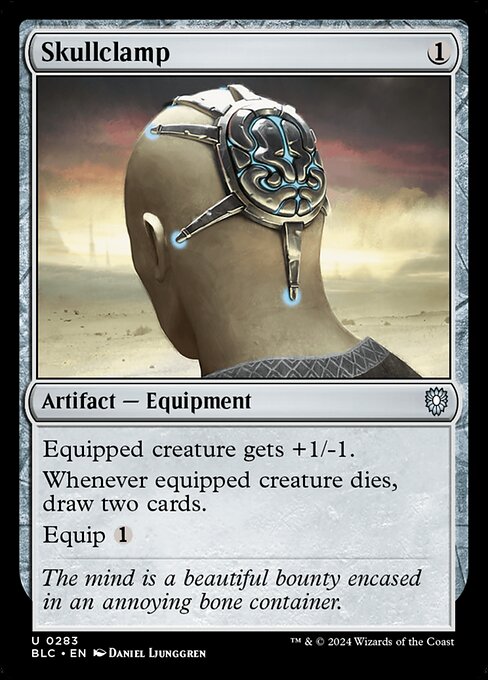 .
.
Multiplayer Gameplay
Much like Commander, this is a multiplayer format. It's designed to be played with anywhere from two to five players. Each player starts with 20 life and turn progression goes clockwise after the first player's turn. Players may attack or target any other player or even multiple players) during their turn.
When a player losses the game they (and all their cards) exit the game and gameplay continues with the remaining players until only one remains.
Frequently Asked Questions
When Was The Format Created?
Oathbreaker first came into existence in 2017.
Who Created It?
The format was designed by a group of MTG fans. You can find an interview with the minds behind it here.
Where Does The Name Come From?
Those who created the game stated "Some Planeswalkers took oaths to protect the people of the multiverse. In order to fight each other, they might have to break these oaths. Besides, it's a catchy name." as the reasoning.
Why 60-Card Decks And 20 Life?
These numbers were chosen to make the format faster and the deck building more interesting. Plus, I would imagine it helps to differentiate it from Commander.
Can You Play One-on-One?
Up until now, the format has been completely casual, and becoming "official" isn't likely to change much. So, yes, you can. I've played 1v1 games before and had a lot of fun.
What About Cards That Refer To Commanders?
Any spell that refers to a Commander (for example Arcane Signet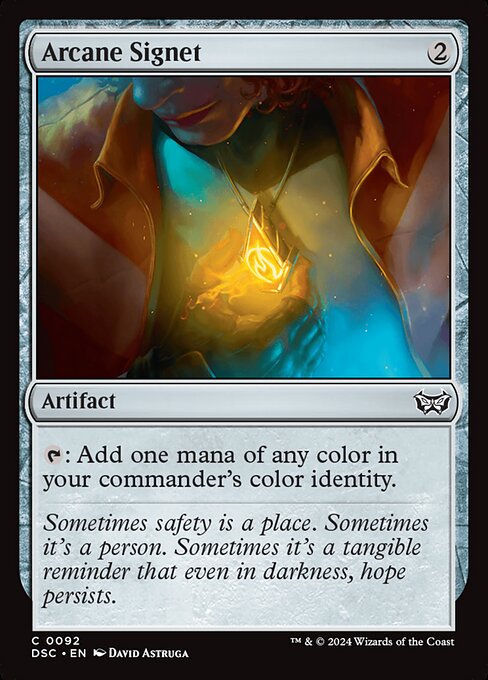 or Command Tower
or Command Tower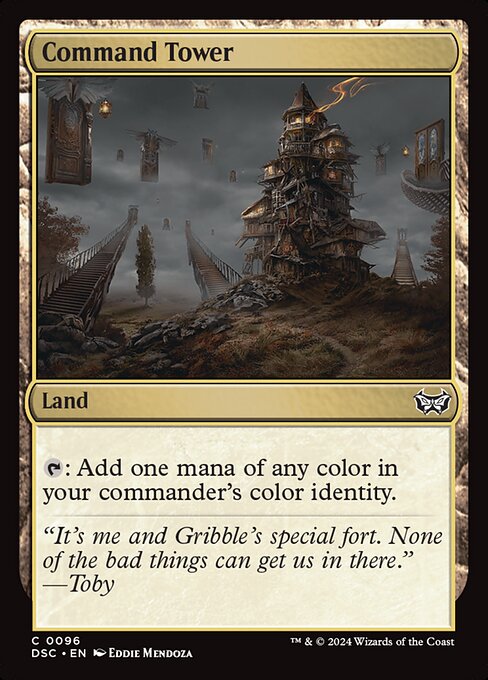 ) also applies to your Oathbreaker and is played just the same.
) also applies to your Oathbreaker and is played just the same.
Can You Use An Adventure As Your Signature Spell?
You cannot. While adventures may be an instant or sorcery on one side, their card type is still a creature. This makes them ineligible for use as a Signature Spell.
Can You use a transforming Planeswalker as my Oathbreaker?
It depends. To be an Oathbreaker the card must be a Planeswalker on its front side. If that's the case, it's a legal choice even if it can transform into a creature. An example of this would be Arlinn Kord // Arlinn, Embraced by the Moon . On the other hand, creatures that turn into Planeswalkers (like Kytheon, Hero of Akros // Gideon, Battle-Forged
. On the other hand, creatures that turn into Planeswalkers (like Kytheon, Hero of Akros // Gideon, Battle-Forged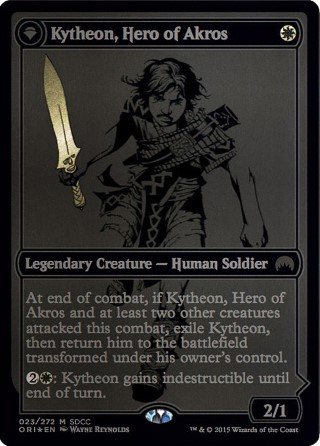 ) may not be used.
) may not be used.
Can You use a split card as my Signature Spell?
Yes. Just be sure to remember that both sides of the spell must be within your color identity.
You May Also Like: All MTG Formats Explained - What They Are And How They Work
Card Legality And Ban List
You can use any card in your deck, so long as it's not banned. So, yes, Commander cards are legal in the format in general. However, there are a few exceptions. First, any card with the “Conspiracy” card type. Next, any cards that refer to “playing with ante.” Lastly, any silver-bordered card. Aside from those, here's a look at the list of cards that you cannot use:
- Ad Nauseam
- Ancestral Recall
- Balance
- Biorhythm
- Black Lotus
- Channel
- Chaos Orb
- Cleanse
- Crusade
- Dark Ritual
- Doomsday
- Emrakul, the Aeons Torn
- Expropriate
- Falling Star
- Fastbond
- Gifts Ungiven
- Griselbrand
- High Tide
- Imprison
- Invoke Prejudice
- Jihad
- Jeweled Lotus
- Library of Alexandria
- Limited Resources
- Lion’s Eye Diamond
- Mana Crypt
- Mana Geyser
- Mana Vault
- Mox Emerald
- Mox Jet
- Mox Pearl
- Mox Ruby
- Mox Sapphire
- Natural Order
- Painter’s Servant
- Pradesh Gypsies
- Primal Surge
- Saheeli, the Gifted
- Shahrazad
- Sol Ring
- Stone-Throwing Devils
- Sundering Titan
- Sylvan Primordial
- Time Vault
- Time Walk
- Tinker
- Tolarian Academy
- Tooth and Nail
- Trade Secrets
- Upheaval
- Yawgmoth’s Bargain
More Information
Here's some other stuff to check out if you're looking for more resources about the format.
- If you're interested in the WOTC official page on the format it can be found here.
- There's a really cool site devoted entirely to the format that can be found here.
Conclusion
I've been playing Oathbreaker for quite a while now and I'm stoked to see it become an official format. If you like Commander and interesting deck-building challenges, you'll love the format too. Between only having 20 life and building a 60-card deck and the inclusion of Planeswalkers and instants and sorceries in the Command Zone there are tons of interesting things to consider when building your decks. Hopefully, you've found today's article helpful in understanding the format. If you're interested in it definitely build a deck and try it out. You won't regret it.




